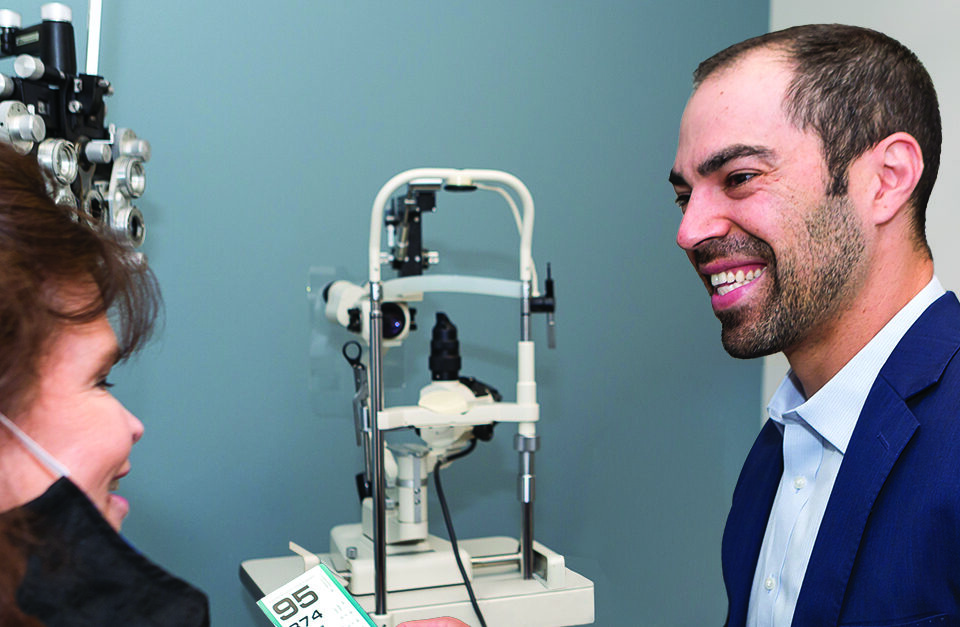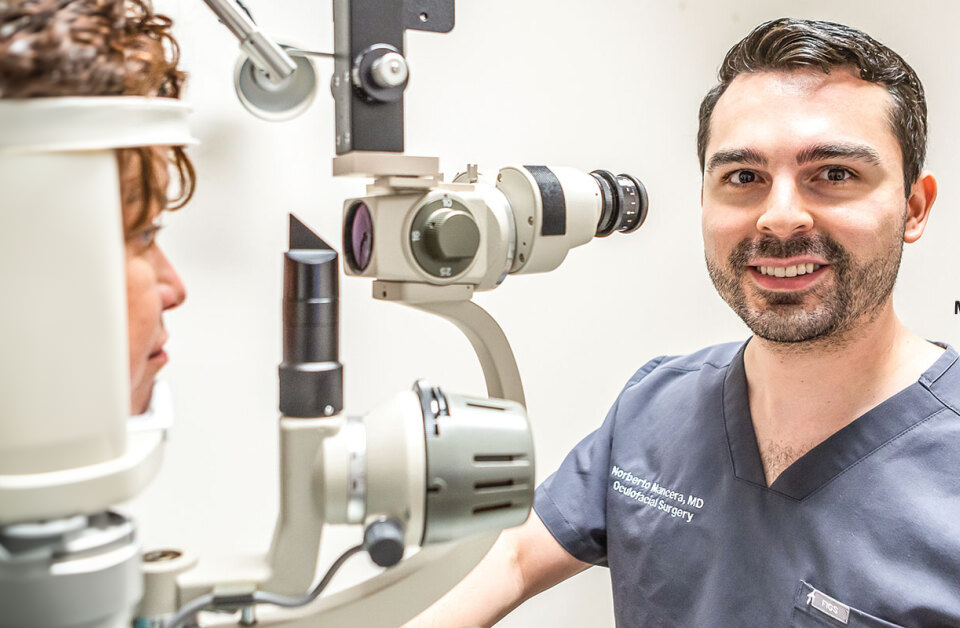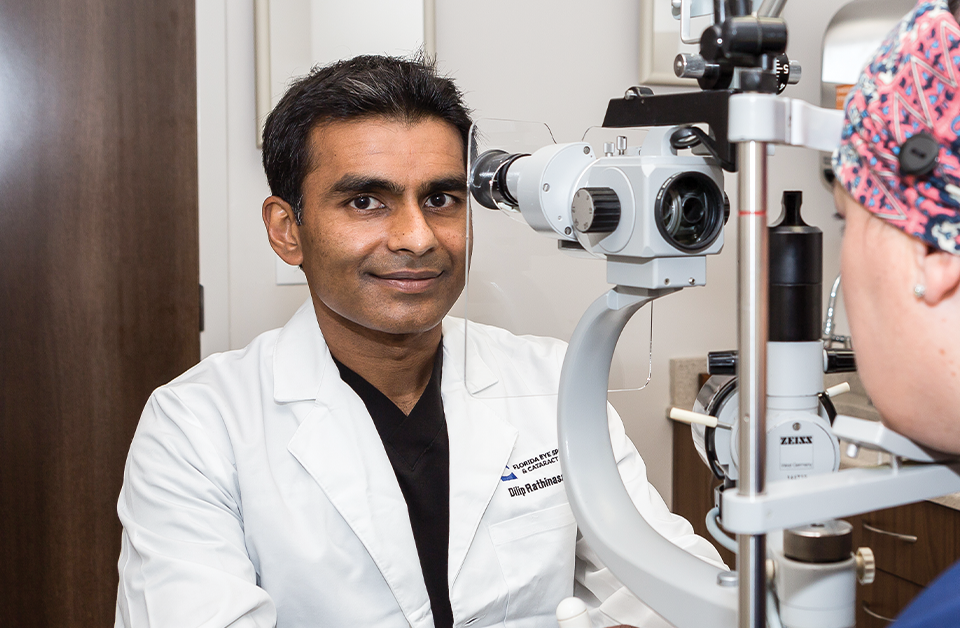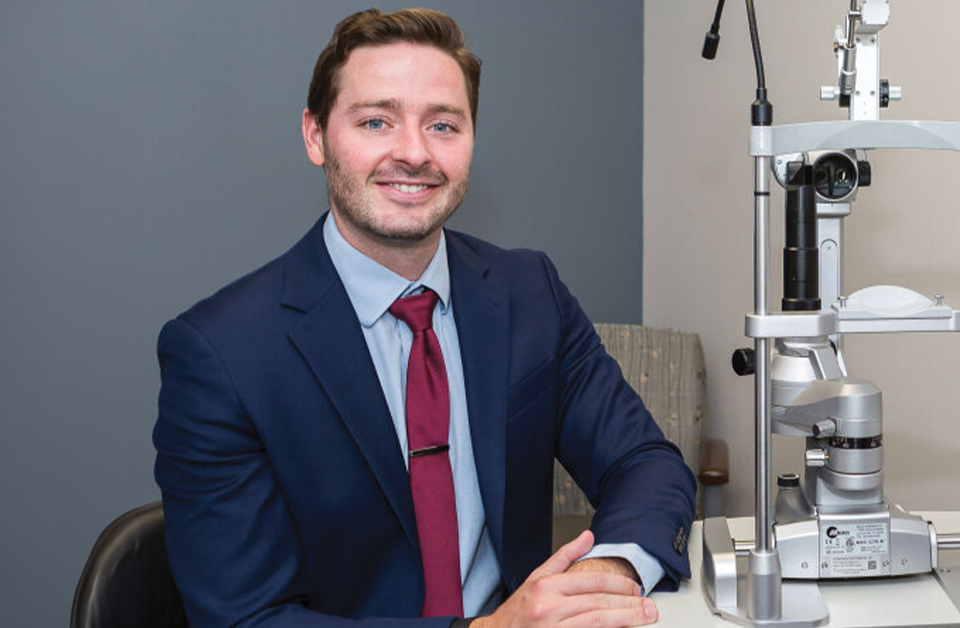The eye may be a small part of the human anatomy, but it plays a large role in collecting sensory input. People receive more than 75 percent of their information about the world around them through sight.
Unfortunately, there is a long list of disorders that can negatively affect the eyes. The most common are refractive errors. According to the National Eye Institute, more than 150 million Americans suffer from refractive errors such as myopia, hyperopia and astigmatism.
Myopia, or nearsightedness, occurs when near objects are clear but faraway objects are out of focus. Hyperopia, or farsightedness, is when an individual has difficulty seeing near objects but faraway objects are clear. Astigmatism is an irregular shape of the cornea, the clear window at the front of the eye, that causes blurry vision at all distances.
Refractive errors are most often corrected with prescription eyeglasses or contact lenses. But for people who want freedom from glasses and contacts, there’s another effective treatment available at Florida Eye Specialists & Cataract Institute: refractive surgery.
“We offer two refractive surgery options: laser in-situ keratomileusis, or LASIK, and photorefractive keratectomy, or PRK,” notes Chris Donovan, MD, a fellowship-trained corneal, cataract and refractive surgeon at the institute, which is based in Brandon. “PRK is actually a precursor to LASIK that has come back into fashion for certain cases. Both procedures are ways of building a patient’s prescriptions into their corneas to give them spectacle independence.”
Surgical Techniques
The FDA approved PRK as a laser surgery to correct refractive errors in 1995. LASIK was approved four years later. The biggest advantage of LASIK over PRK, according to Dr. Donovan, is quicker recovery and restoration of vision.
“During LASIK, we first use a femtosecond laser to create a small, very thin flap in the cornea, which exposes the stroma, or middle layer,” the doctor details. “We peel back the flap and use an excimer laser to ablate the cornea and change its shape. We then replace the flap, which seals shut naturally due to the pressure gradient inside the cornea.
“Patients are given a relaxing medication prior to surgery, which makes them a little sleepy. We encourage patients to take a three-to four-hour nap following the procedure. By the time they wake up, the flap is perfectly sealed, and they have near their final visual acuity. They wake up with very clear vision without glasses.”
PRK is another way of accessing the stroma. During this procedure, the surgeon scrapes away the cornea’s outer cellular layer, which is called the epithelium. Directly underneath the epithelium is another layer of tissue called Bowman’s layer and under that is the stroma.
“Once we scrape the epithelium, we use the same excimer laser to reshape the cornea,” Dr. Donovan educates. “When we’re done, we place a contact lens on the eye to help mitigate some of the discomfort that can occur when there’s a large abrasion on the corneal surface. The epithelial cells grow back in about three to four days.
“Patients start to see clearly about a week after the PRK procedure, which requires a little more recovery time than LASIK but still gives patients an excellent visual outcome.”
PRK may be recommended for patients with dry eye disease because there’s often less drying of the eyes with PRK than with LASIK. It also may be recommended if the patient’s job or activities pose a high risk for being hit in the eye, which could dislodge the LASIK flap.
Dr. Donovan stresses, however, that both are excellent procedures, and both can result in independence from glasses and contacts.
Maybe Monovision
As people approach middle age, their lenses begins to change and can no longer adjust their shape to accommodate all focal points of vision: near, intermediate and distance. Most notably, these changes impair close-up, or reading, vision. This condition, called presbyopia, can be addressed during LASIK surgery.
“If patients are in their mid- to late 40s, have presbyopia and are worried about needing reading glasses after LASIK, we can correct their eyes for monovision,” Dr. Donovan reveals. “With monovision, one cornea — typically the one in the non-dominant eye — is reshaped to provide a focal point of about computer distance. The other eye is set for distance vision.
“This technique provides patients with good reading vision as well as good faraway vision. It is a very popular alternative to needing reading glasses after surgery.”
Most patients tolerate monovision well, Dr. Donovan reports. Still, he and his colleagues at Florida Eye Specialists & Cataract Institute typically perform a trial using glasses or a contact lens in one eye to confirm the patient can tolerate the correction before surgery is performed.
All About Cataracts
LASIK and PRK are laser surgeries. The eye specialists at Florida Eye Specialists & Cataract Institute also use an advanced laser for the treatment of cataracts.
Cataracts are the clouding of the lens caused by a breakdown of lens fibers or a clumping of eye proteins as a person ages.
“Think of the lens as you would a window made of clear, thick, flexible plastic,” details Dilip “Dr. Samy” Rathinasamy, MD, a board-certified ophthalmologist and cataract surgeon at Florida Eye Specialists & Cataract Institute.
“As the elements take their toll on the window, it becomes discolored, distorting the images that can be seen through it. Eventually, the plastic becomes so discolored that you can’t see anything through it.
“A cataract develops in much the same way, which is why cataracts can cause blurry vision and even cause some people to notice more glare than usual, especially at night, with halos or starbursts around car headlights and lamps.”
Cataracts can also cause colors to appear faded or have a yellow or brown tint. Reading may become more difficult as it becomes harder to distinguish the contrast between letters and the background. Frequent vision prescription changes may also signal the presence of cataracts.
The only treatment for cataracts is surgery, which starts with the breakup and removal of the affected lens. Then, a synthetic replacement known as an intraocular lens, or IOL, is implanted.
The goal during cataract surgery is to fit patients with IOLs that minimize or eliminate their dependency on eyeglasses. To help achieve that objective, the institute uses the LENSAR® laser system, a leading-edge femtosecond technology.
“The LENSAR’s functions and precise laser incisions enable surgeons to remove the cataracts with increased safety,” Dr Samy contends. “They also allow us to position the IOLs with greater accuracy. These innovations lead to better vision following surgery.”
The LENSAR automates certain aspects of cataract surgery that were traditionally done by hand, so the procedure is more efficient, more effective and safer.
“The laser makes the initial incision into the eye,” Dr. Samy details. “It can also create the capsulotomy, which is the opening into the thin, fragile membrane, or capsule, that holds the cataract. And it does so with exceptional precision.
“A capsulotomy done by hand can be less than perfect. The importance of having a perfect capsulotomy is that the IOL can then sit in a more optimal position, which ultimately gives the patient better vision.”
Premium Lenses
Technology has also led to vast improvements in IOLs, which are made of acrylic or silicone and are coated with special material to protect the eyes from the sun’s ultraviolet rays.
The IOL has two parts: the optic, or central area responsible for refraction, and side structures called haptics that hold it in position. Like contact lenses, IOLs come in various focusing powers to correct different vision issues.
“The most commonly used IOLs are monofocal lenses, which correct for one focal range, typically distance vision,” Dr. Samy notes. “This results in excellent vision for driving and most daily activities, but people may require reading glasses for very small print. One way to get around that is the monovision approach.”
Then there are multifocal lenses.
“Most multifocal lenses are bifocals that correct either distance and intermediate vision or distance and near vision,” Dr. Samy explains. “They generally permit the patient to be less dependent on glasses.”
Another option is a trifocal lens. The PanOptix®, made by Alcon, allows for crisp, clear vision at all zones: distance, intermediate and reading.
“The PanOptix became available in the United States in late 2019 and is the only trifocal lens approved for use in the US,” Dr. Samy reports. “It has quickly become a popular lens choice because it virtually eliminates the need for glasses following cataract surgery.”
The main drawback to multifocal lenses is that they sometimes produce visual disturbances, such as rings and halos around lights at night. But a newer multifocal lens, the Alcon AcrySof® IQ Vivity®, has a significantly lower risk of nighttime visual side effects.
“The Vivity is a new generation of multifocal lens that we refer to as an extended depth of focus lens,” Dr. Samy educates. “It uses innovative technology that bends light rays entering the eye, allowing light to focus properly on the retina.
“The retina converts light rays into electrical signals and sends those signals to the brain, which interprets them as images.”
The Vivity corrects blurriness and gives patients clear distance, near and intermediate vision, often eliminating the need for glasses.












